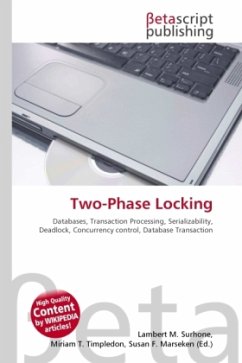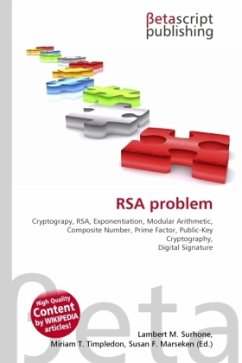
Producer-Consumer Problem
Versandkostenfrei!
Versandfertig in 6-10 Tagen
23,99 €
inkl. MwSt.

PAYBACK Punkte
12 °P sammeln!
High Quality Content by WIKIPEDIA articles! In computer science, the producer-consumer problem (also known as the bounded-buffer problem) is a classical example of a multi-process synchronization problem. The problem describes two processes, the producer and the consumer, who share a common, fixed-size buffer. The producer's job is to generate a piece of data, put it into the buffer and start again. At the same time the consumer is consuming the data (i.e. removing it from the buffer) one piece at a time. The problem is to make sure that the producer won't try to add data into the buffer if it...
High Quality Content by WIKIPEDIA articles! In computer science, the producer-consumer problem (also known as the bounded-buffer problem) is a classical example of a multi-process synchronization problem. The problem describes two processes, the producer and the consumer, who share a common, fixed-size buffer. The producer's job is to generate a piece of data, put it into the buffer and start again. At the same time the consumer is consuming the data (i.e. removing it from the buffer) one piece at a time. The problem is to make sure that the producer won't try to add data into the buffer if it's full and that the consumer won't try to remove data from an empty buffer.












